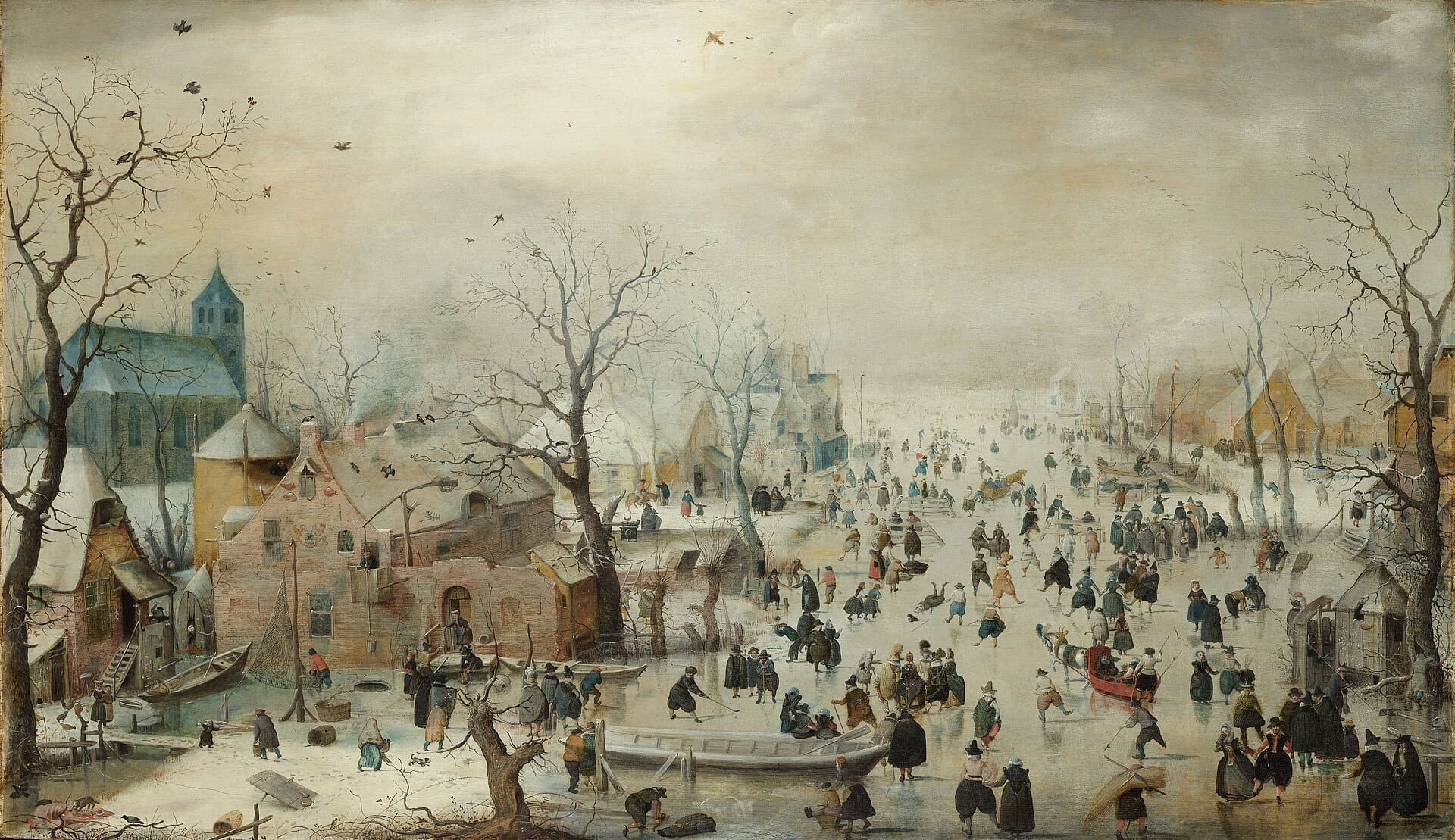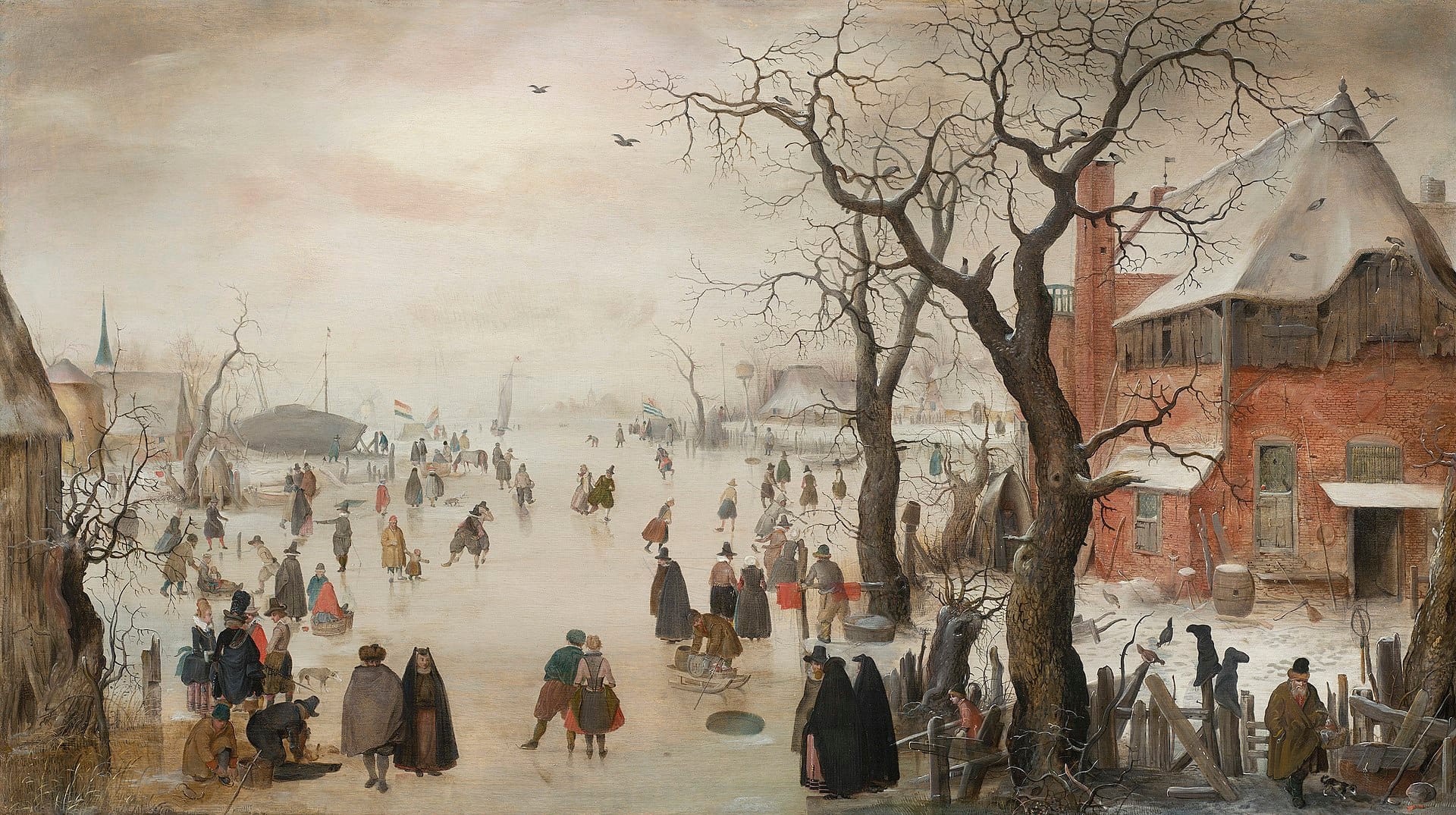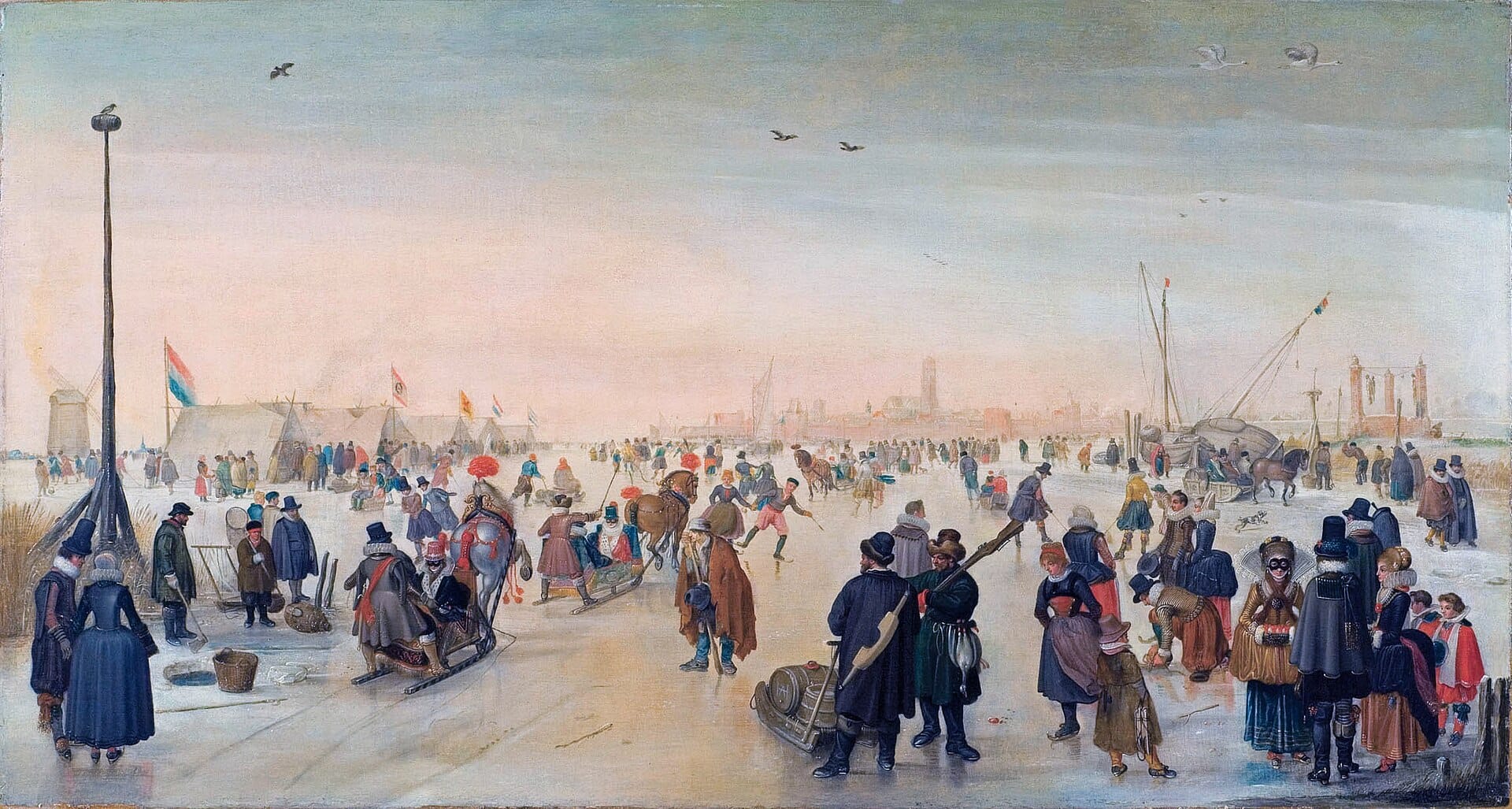The Little Ice Age

Many of the events in this chapter took place against the backdrop of a mini-Ice Age in Europe, from the 16th century or even earlier through the mid-19th, being at its worst between 1560 and 1660. In 1608, the Thames froze over at London. It did so again several more times in subsequent decades.
Whatever the reasons for it, and it is a lively ongoing debate today among climate scientists (fewer sunspots, more volcanic activity, etc.), it resulted in slowed agricultural production (of grain especially), flat population growth and entire societies on the move. This was aggravated by plague, influenza, malaria (ague), famine, storms, witch hunts (scapegoats) and incessant warfare. One historian, Geoffrey Parker, estimates that the population of the world during this period was reduced by as much as a third.
If on a winter's night a traveler...

In the arts, the landscape painters of the Dutch and Flemish Golden Age painted a number of exquisite winter scenes, the most famous being those by Pieter Bruegel the Elder, like Winter Landscape with a Bird Trap and Hunters in the Snow (both in 1565). The latter painting is shown above. Below is Aert van der Neer's Winter Landscape with Skaters on a Frozen River (1640's). He was Amsterdam-based and he lived and died in obscurity and poverty.

The following three paintings are by Hendrick Avercamp, a Dutch painter who was mute and probably deaf, and who specialized in winter scenes in the town of Kampen.



